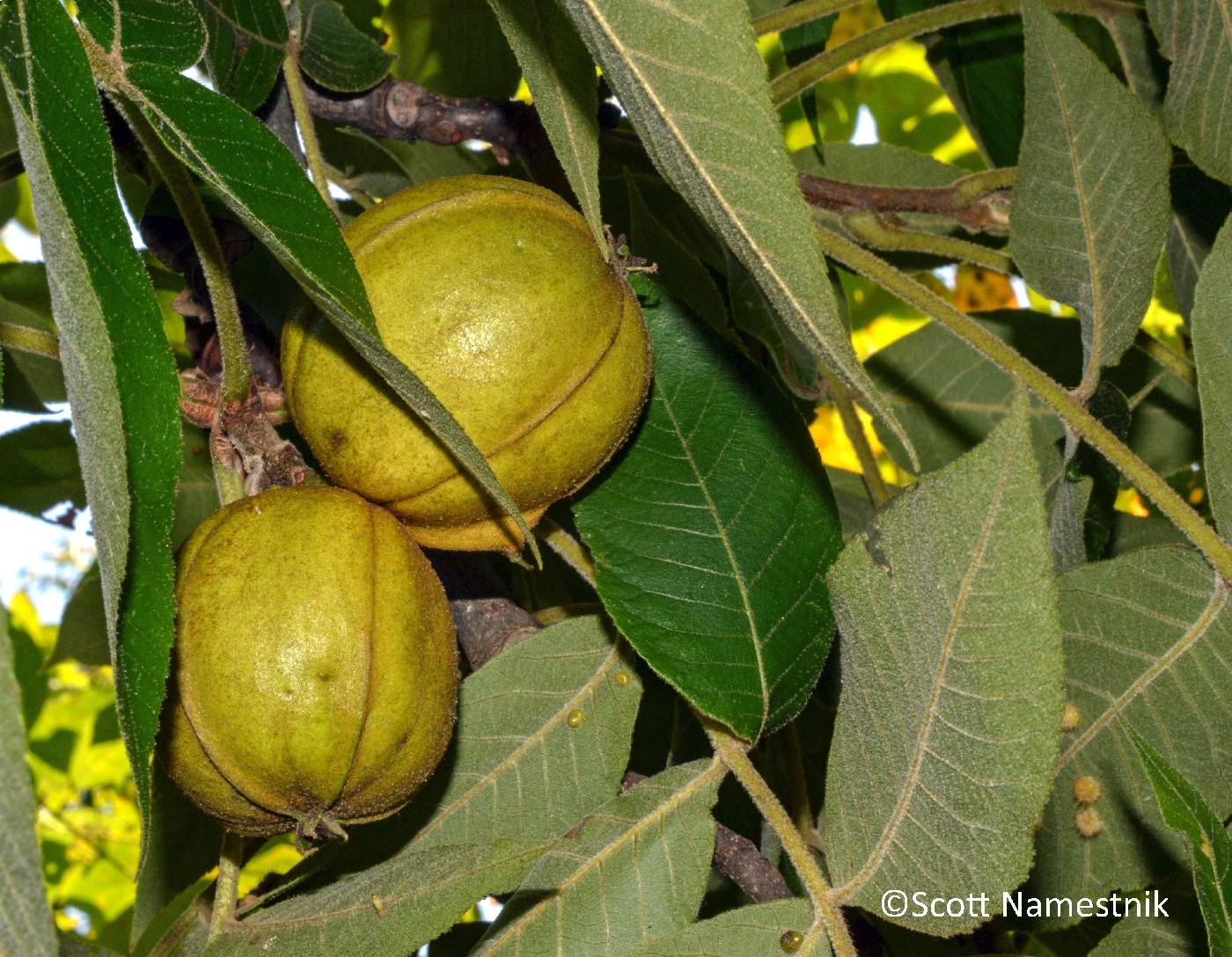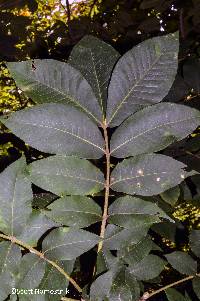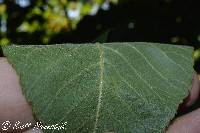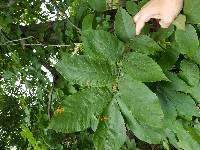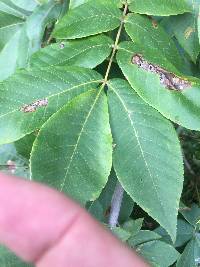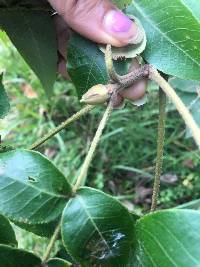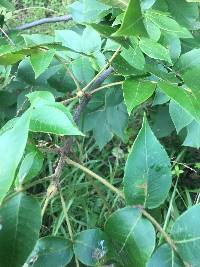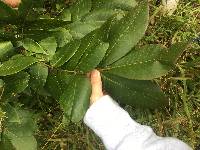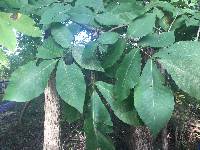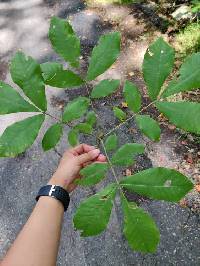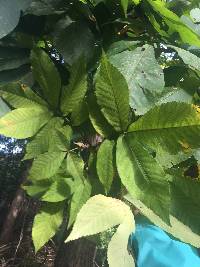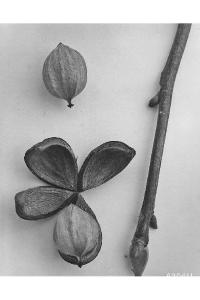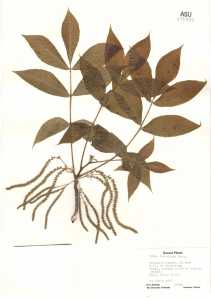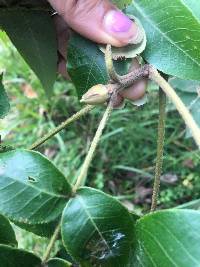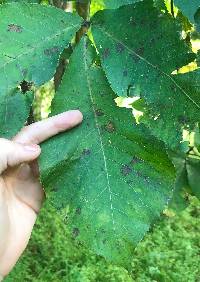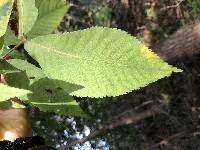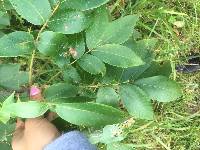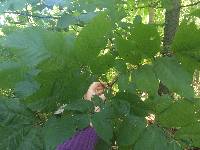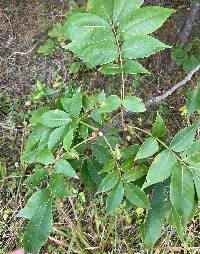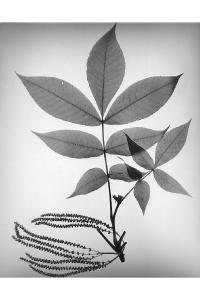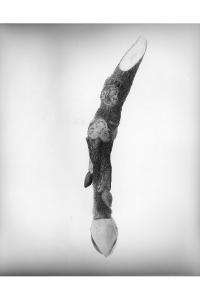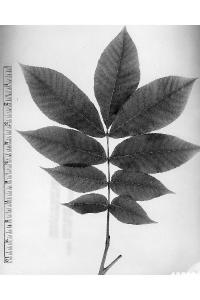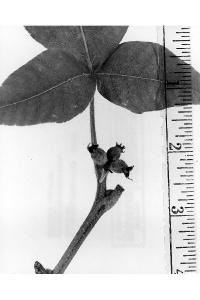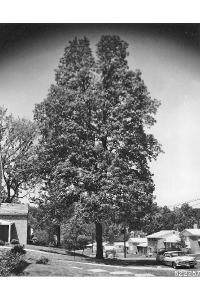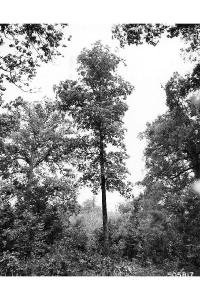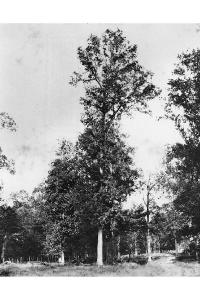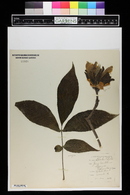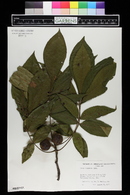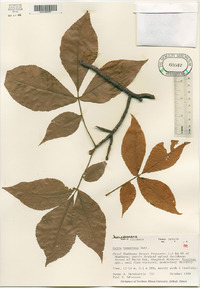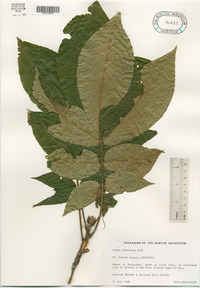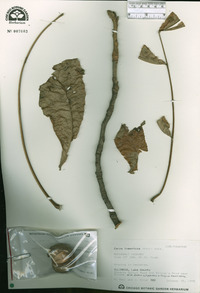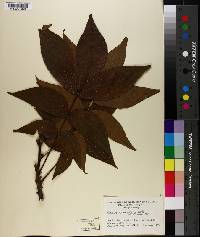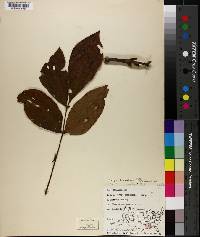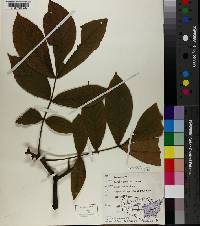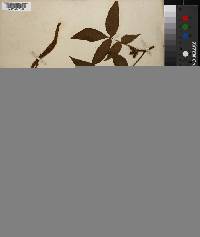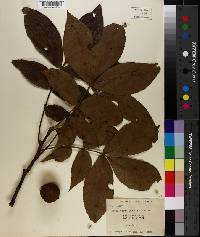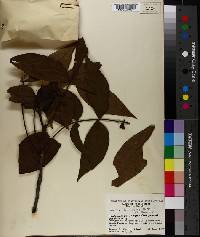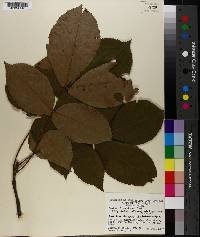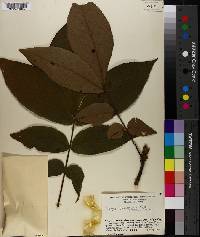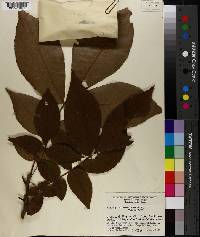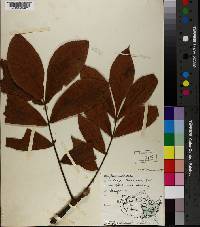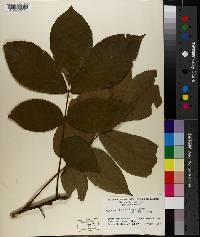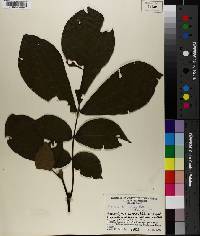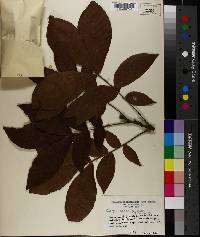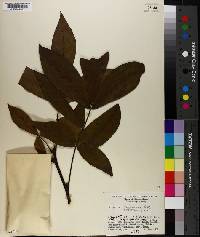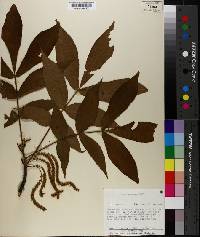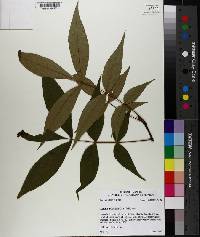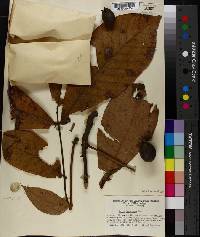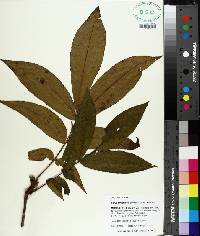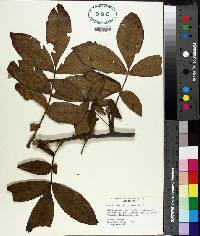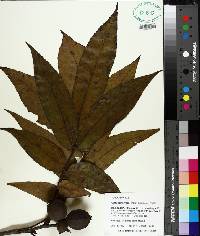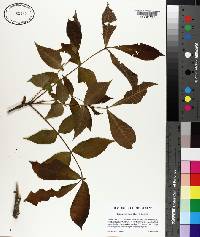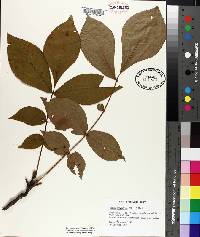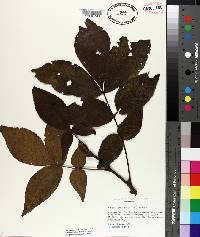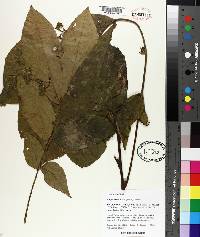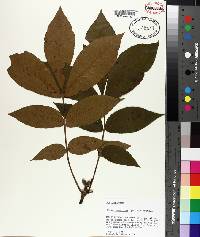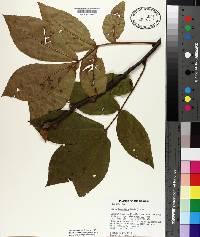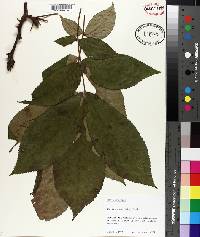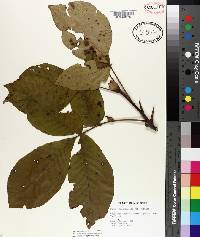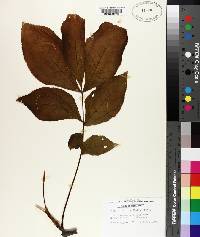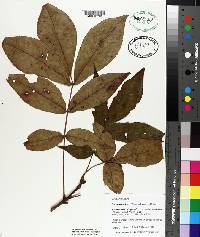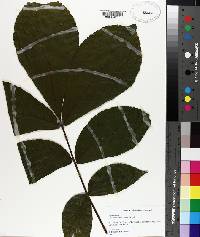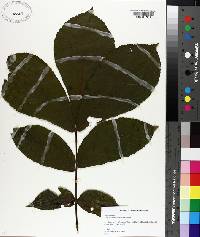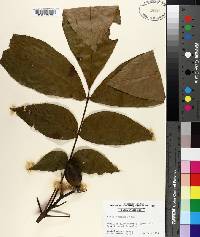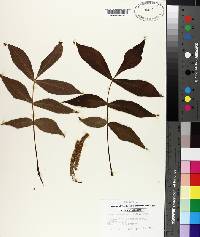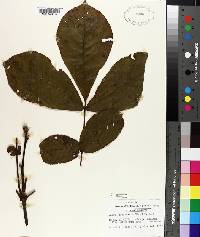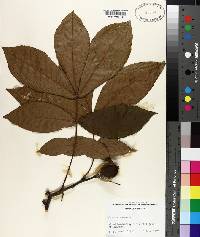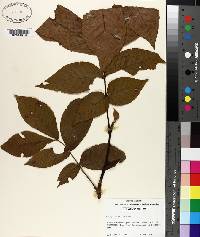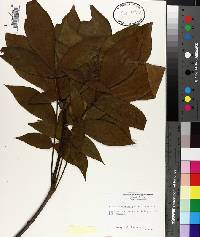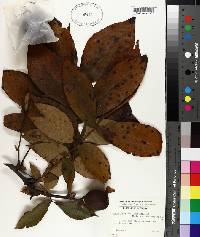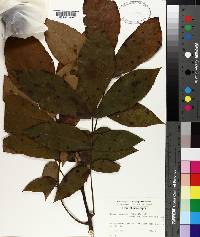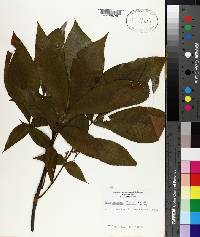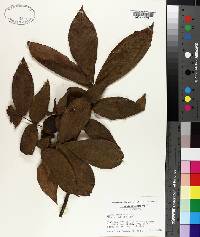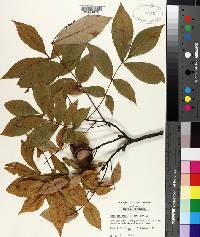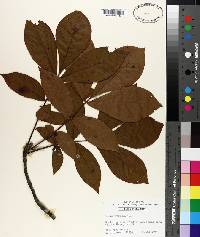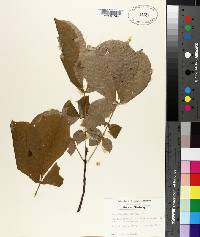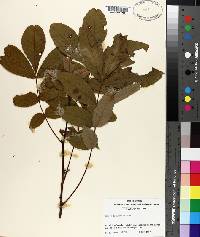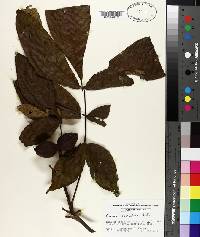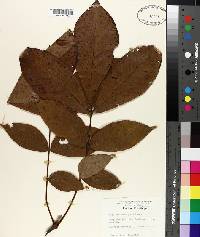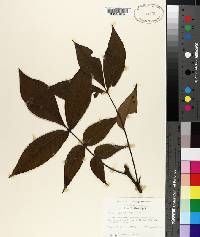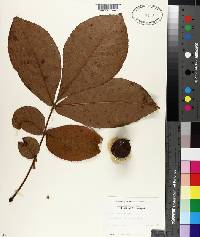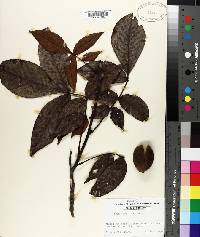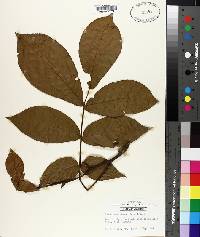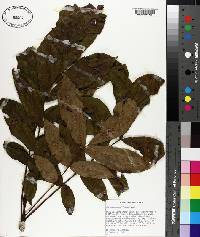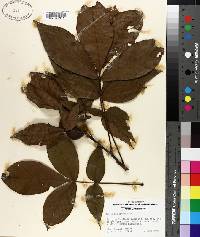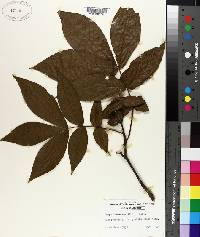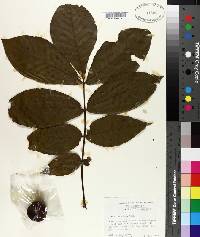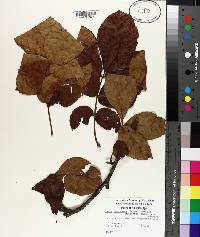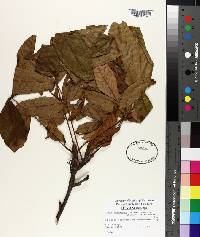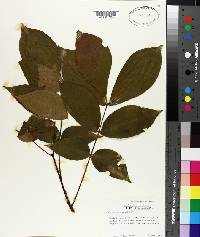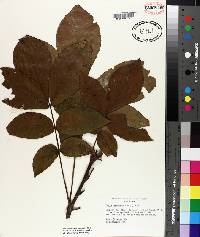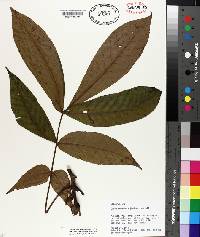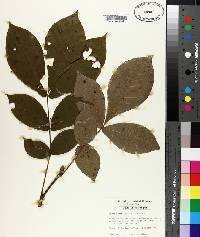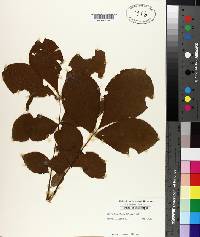
|
|
|
|
Family: Juglandaceae
Mockernut Hickory, more...White Hickory
[Carya alba Nutt., moreCarya alba var. anomala Sarg., Carya alba var. ficoides Sarg., Carya alba var. ovoidea Sarg., Carya tomentosa var. subcoriacea E.J.Palmer & Steyerm., Hicoria tomentosa , Juglans alba L.] |
Trees , to 36 m. Bark dark gray, fissured or ridged. Twigs reddish brown, stout, hirsute and scaly. Terminal buds tan (after early loss of outer scales), broadly ovoid, 8-20 mm, tomentose; bud scales imbricate; axillary buds protected by bracteoles fused into hood. Leaves 3-5 dm; petiole 3-12 cm, petiole and rachis hirsute, with conspicuous large and small round peltate scales. Leaflets (5-)7-9, lateral petiolules 0-2 mm, terminal petiolules 2-13 mm; blades ovate to elliptic or obovate, not falcate, 4-19 × 2-8 cm, margins finely to coarsely serrate, apex acute, rarely acuminate; surfaces abaxially hirsute with unicellular, 2-8-rayed fasciculate and multiradiate hairs, and with large and small round peltate scales abundant, adaxially hirsute along midrib and major veins, puberulent with fasciculate hairs and scales in spring. Staminate catkins pedunculate, to 14 cm, stalks and bracts hirsute, scaly, apex of each bract with coarse hairs; anthers hirsute. Fruits reddish brown, finely mottled, spheric to ellipsoid or obovoid, not compressed to compressed, 3-5 × 3-5 cm; husks rough, 4-10 mm thick, dehiscing to middle or nearly to base, sutures smooth; nuts tan, spheric to ellipsoid, compressed, prominently to faintly 4-angled, rugulose; shells thick. Seeds sweet. 2 n = 64. Flowering spring. Well-drained sandy soils, rolling hills and rocky hillsides, occasionally on limestone outcrops; 0-900 m; Ala., Ark., Conn., Del., Fla., Ga., Ill., Ind., Iowa, Kans., Ky., La., Md., Mass., Miss., Mo., N.J., N.Y., N.C., Ohio, Okla., Pa., R.I., S.C., Tenn., Tex., Va., W.Va. Both the mockernut hickory and the shagbark hickory were formerly known as Carya alba (Linnaeus) K. Koch [or Hicoria alba (Linnaeus) Britton], based on Juglans alba of Linnaeus. A. J. Rehder (1945) pointed out that the original circumscription included two taxa, and C . alba ( J . alba ) should therefore be rejected as ambiguous in favor of C . tomentosa and C . ovata , respectively. Carya tomentosa hybridizes with C . texana ( C . × collina Laughlin) and is reported to hybridize with the diploid C . illinoinensis ( C . × schneckii Sargent). Cherokee Indians used Carya tomentosa medicinally as an analgesic, especially as an aid for polio, and as an oral and a cold aid; the Delaware, as a gynecological aid and a tonic (D. E. Moerman 1986).
Tree 15 to 30 m tall Leaves: odd-pinnately compound, 15 - 30 cm long, with seven to nine leaflets. Flowers: either male or female, found on the same tree (monoecious), male flowers in catkins reaching 14 cm long, female flowers in short spikes of two to five. Fruit: a nut surrounded by a husk, 3 - 5 cm long, 3 - 5 cm wide. The husk is reddish brown, spherical to elliptical or widest near the top, rough, and splits to the middle or base. Nut tan, 1.5 - 3 cm long, and four-ridged. Bark: dark gray, fissured in a diamond pattern. Twigs: stout, reddish brown, densely hairy. Terminal buds: 0.8 - 2 cm long, egg-shaped, hairy. Leaflets: deep yellowish green above, 4 - 19 cm long, 2 - 8 cm wide, egg-shaped to elliptical or narrow oblong, finely toothed, hairy beneath. Leaves turn golden in fall. Similar species: Carya cordiformis can be distinguished from other hickories by its sulfur-yellow buds that appear naked, nine narrow leaflets, fruit with a husk that splits to the middle, and bark that remains tight. Carya glabra has bark that remains tight except for a few shaggy strips, fairly smooth twigs, five to seven leaflets, pear-shaped to elliptical or spherical fruit with a husk that may split to the base, and small dome-shaped terminal buds.Carya laciniosa differs by its shaggy bark, stout orangish tan twigs with orange lenticels, seven leaflets with soft hairs beneath, very large oblong to spherical and four- to six-ridged nuts with husks splitting to the base, and large terminal buds with slightly curling outer scales. Carya ovata has shaggy bark, foliage that smells like apples when crushed, five leaflets fringed with tufts of hair along the margins, nearly spherical husks that separate from a four-ridged nut, and large terminal buds with slightly curling outer scales. Flowering: May Habitat and ecology: Upland forests and disturbed areas such as railroad right-of-ways. This species has a southern distribution and is rarely seen in the Chicago Region. Occurence in the Chicago region: native Notes: Native Americans used this plant as a pain reliever for polio and colds. Etymology: Carya comes from the Greek name for walnut. Tomentosa means "with densely matted hairs," referring to the twigs and leaves. Author: The Morton Arboretum Bark gray, becoming dark gray and deeply furrowed in age, not separating into plates; lfls mostly 7 or 9, persistently pubescent beneath with fascicled hairs, the terminal oblanceolate to obovate; fr ellipsoid to obovoid, rarely ovoid, 3.5-5 cm, its stony husk 2-6 mm thick, eventually splitting to the base; nut 1.5-3 cm, slightly compressed to subterete, ±angled, subglobose or ovoid to obovoid, rounded at base, thick-walled; kernel edible; 2n=64. Dry woods; Mass. to Ind., se. to Io. and Mo., s. to Fla. and Tex. (C. alba) Gleason, Henry A. & Cronquist, Arthur J. 1991. Manual of vascular plants of northeastern United States and adjacent Canada. lxxv + 910 pp. ©The New York Botanical Garden. All rights reserved. Used by permission. From Flora of Indiana (1940) by Charles C. Deam Very rare in the northern part of the state, becoming infrequent to frequent in the extreme southern part. It is doubtful whether all reports from the northern part of the state by other authors are authentic. It is essentially a tree of dry and usually poor soil but it is found in the lowlands of the Lower Wabash Valley where it is often associated with the preceding species. In the unglaciated area, it is generally found associated with the pignut hickory, black and white oaks, and often with the tulip tree. [Variety subcoriacea] is known from a single tree on the east bank of the cypress swamp in the southwestern part of Posey County. For several years I bought hickory nuts for table use from this area and nuts of this variety were not infrequent in the lot. It is distinguished from the species [Carya tomentosa] by the larger size and shape of the fruit and nut. The dried fruit is 5 cm long, oblong. The nut is oblong, 4.4 cm long, pointed at both ends, or some nuts are somewhat ovoid and more rounded at the base, little compressed, and strongly angled; shell very thick, 5 mm at the thinnest place; kernel very small and sweet. ...... Indiana Coefficient of Conservatism: C = 6 Wetland Indicator Status: UPL |
|
|
|

